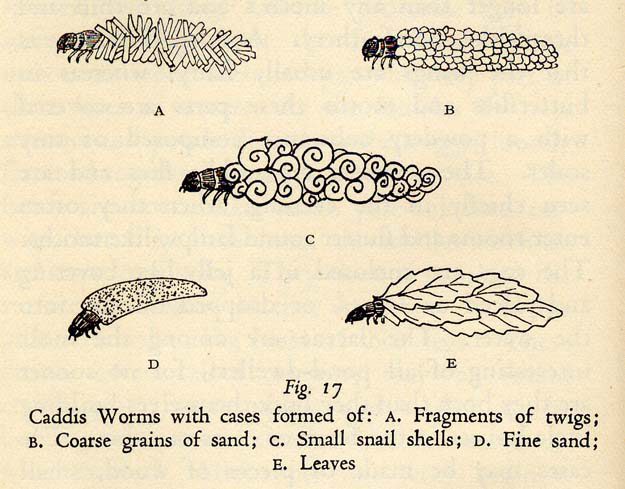Eric Fitch Daglish, How to see Pond Life, Londres, J.M. Dent & Sons, 1934, pp. 63-64.
The larvae are among the most interesting of all pond-dwellers, for no sooner are they born than they busy themselves building little houses in the form of cases or tubes. The cases may be made of pieces of wood, small stones, fragments of water weeds, and similar materials obtained from the bottom of the pond or stream. The head and thorax of the caddis worm is almost white, soft, and tender. The case completely covers the soft parts and prevents the larva from being gobbled up by a fish, or from falling a victim to a carnivorous water beetle or bug. Having built its case, the caddis worm fixes itself to its home by a pair of horny hooks, which it bears on the last segment of its body, and is safe from ennemies. Should it be threatened it draws its head and thorax into its tube and remains completely hidden till danger is past, when it again pushes out the fore part of its body and continues on its way. Most caddis worms are vegetarians, but some eat the bodies of dead animals, or even small live creatures when they find and can catch them. As the larva grows it builds, so that its case always fits its body…/…

The cases made by these larvae are very interesting objects. Although some caddis worms are not particular what they use in building their homes, others carefully select their building material. Cases composed entirely of tiny pieces of wood, grains of sand, green leaves, and even minute shells may be found. The last are perhaps the most remarkable, for the caddis worm does not always choose empty shells ; occasionally tubes may be found which are built entirely of tiny live snails.